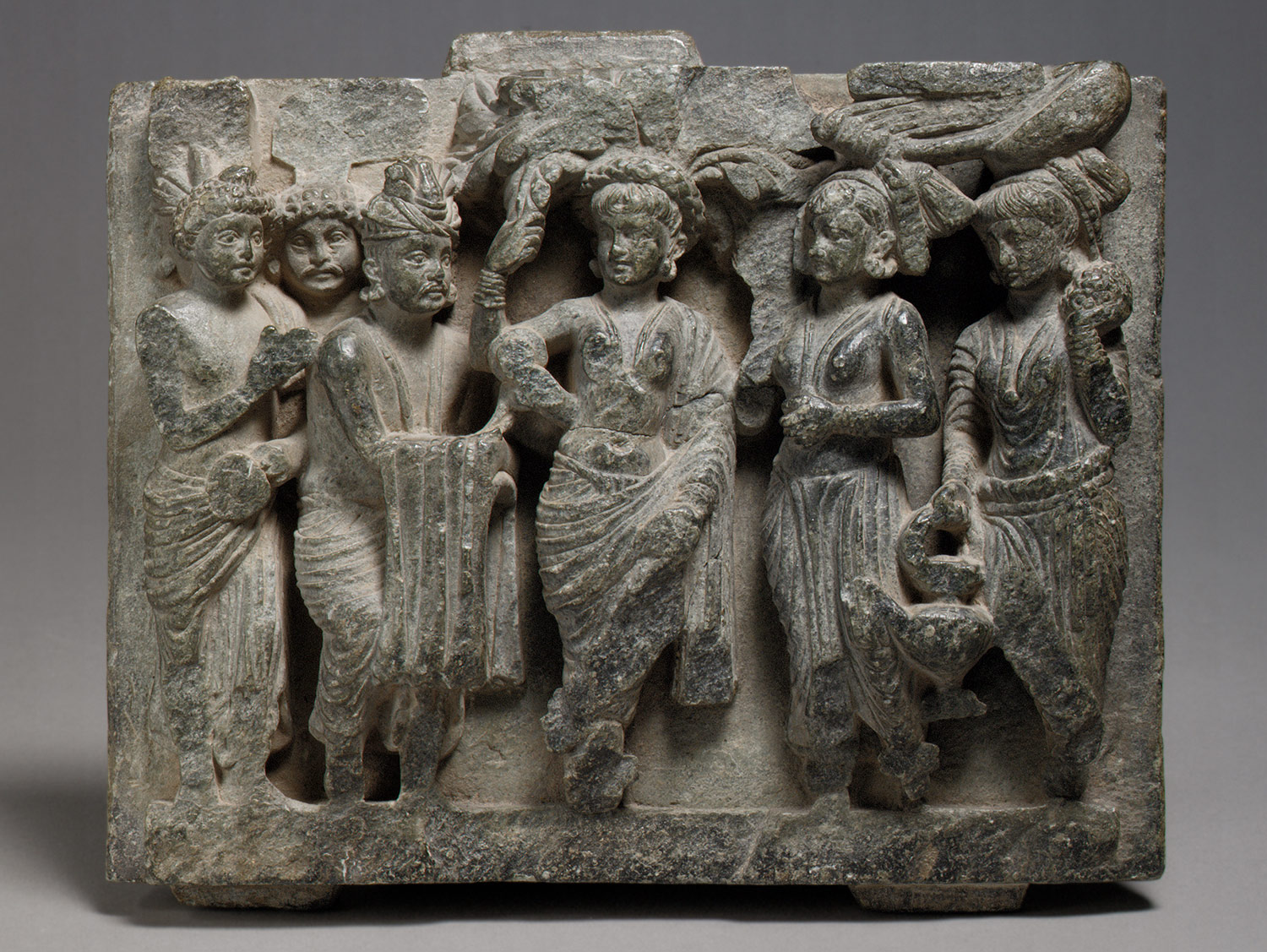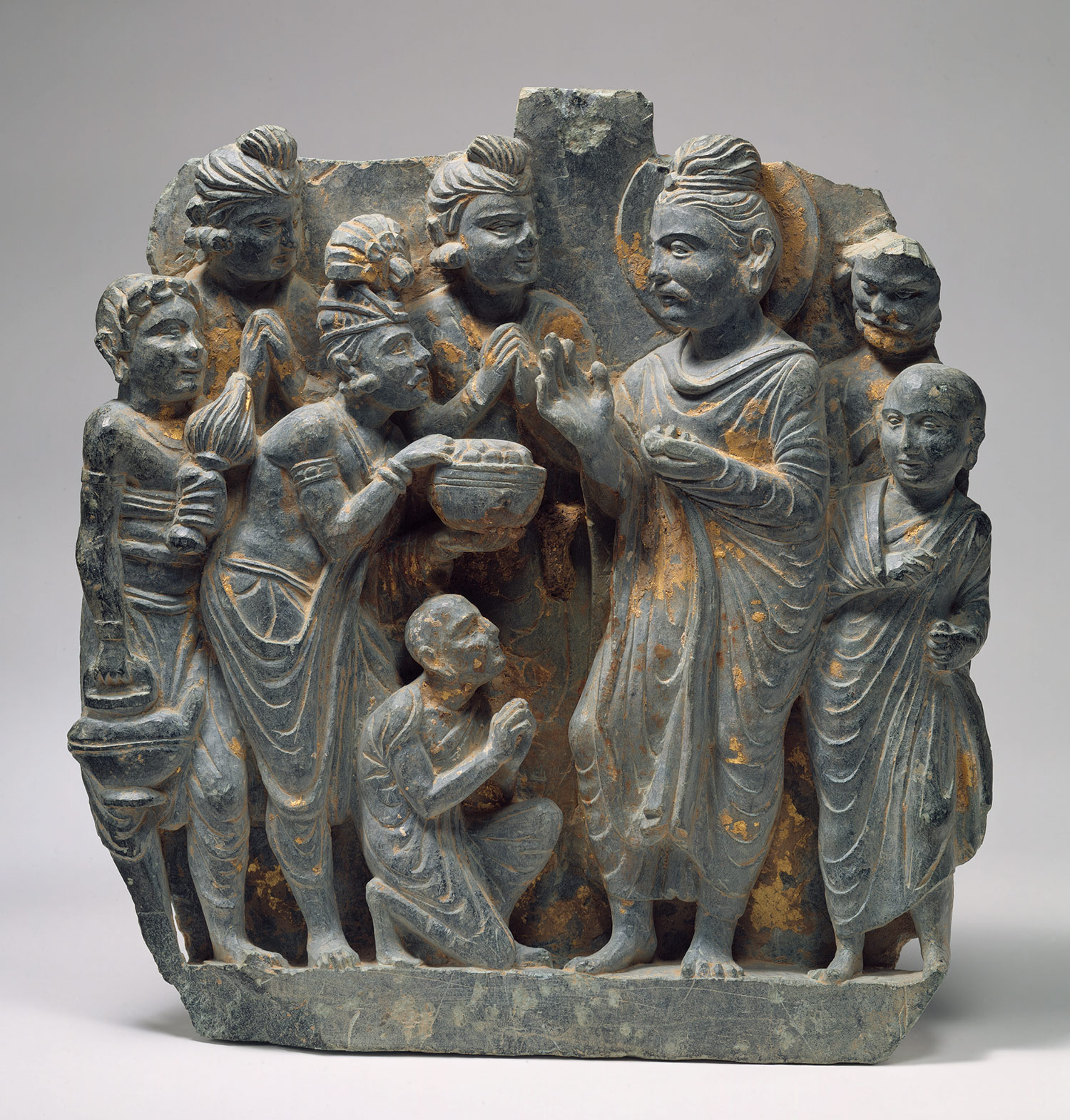
Posted on 11/17/2007 7:56:16 PM PST by blam
The Kushan Empire (c. 1st–3rd centuries) was a state that at its cultural zenith, circa 105–250 CE, extended from what is now Tajikistan to Afghanistan, Pakistan and down into the Ganges river valley in northern India. The empire was created by the Kushan tribe of the Yuezhi confederation, an Indo-European people[2] from the eastern Tarim Basin, China, possibly related to the Tocharians. They had diplomatic contacts with Rome, Persia and China, and for several centuries were at the center of exchange between the East and the West.

In other words, they controlled part of the Silk Road, which made them rich, powerful, and mean as hell with which to deal.

Birth of the Buddha, Kushan period Pakistan (ancient region of Gandhara, probably Takht-i-Bahi) Stone; 6 x 7 in. (16 x 19.7 cm)

The Gift of Anathapindada, Kushan period, 2nd–3rd century Pakistan, ancient region of Gandhara Schist with traces of gold foil; 9 5/8 x 9 in. (24.4 x 22.9 cm)

Sculpture: Dancing Women
I read that they were pretty good business people.
I get a kick out of their art. They were verily the embodiment of insecure noveau riche. Their art was a hilarious syncretism of greek, persian, buddhist and hindu influences. I recall a National Geographic photo of a sculpture of a greco-roman aphrodite statuette with a hindu head-dot and buddhist motifs.
|
|
|||
Gods |
Thanks Blam. |
||
|
· Mirabilis · Texas AM Anthropology News · Yahoo Anthro & Archaeo · · History or Science & Nature Podcasts · Excerpt, or Link only? · cgk's list of ping lists · |
|||
Yeay, there were so many different cultural influences coming in from so many directions, they lacked the knowledge of what all of them meant. The result is kitsch. Sort of like what you see in parts of southeast Asia, were some folks think that our Christmas is celebrated with pink plastic blown-up bunnies!

"Tocharian donors", possibly the "Knights with Long Swords" of Chinese accounts, depicted with light hair and light eye color and dressed in Sassanian style. 6th century CE fresco, Qizil, Tarim Basin. Graphical analysis reveals that the third donor from left is performing a Buddhist vitarka mudra. These frescoes are associated with annotations in Tocharian and Sanskrit made by their painters.There is evidence both from the mummies and Chinese writings that many of them had blonde or red hair and blue eyes, characteristics also found in present-day Afghanistan, Pakistan, Tajikistan and Central Asia, due to the populations' high genetic diversity. This suggests the possibility that they were part of an early migration of speakers of Indo-European languages that ended in what is now the Tarim Basin in western China. According to a controversial theory, early invasions by Turkic speakers may have pushed Tocharian speakers out of the Tarim Basin and into modern Afghanistan, India, Turkmenistan, Pakistan, Tajikistan, and Uzbekistan."
Sounds right. I’m an art historian by education and training. The cross-cultural influences, due to the Silk trade route, was amazing in its richness.
How unfortunate the place is now a political mess. But so was Europe 1000 years ago, and as recently as 60 years ago. There is always the hope things will improve.
Pakistan? Pakistan has been in existence only since 1947!
:^)
You make that a RED bunny with white dots and you’ve got the color scheme right (if nothing else).
Don’t be so picky (older word for “PC”) ~ it’s pretty obvious that means “in the place some people now call Pakistan”.
No, it just read odd. Sort-of like using 3rd century-U.S.A, when referring to a native tribal kingdom of that period, in North America.
You’d still want to do your geographic references to the United States though.
Disclaimer: Opinions posted on Free Republic are those of the individual posters and do not necessarily represent the opinion of Free Republic or its management. All materials posted herein are protected by copyright law and the exemption for fair use of copyrighted works.